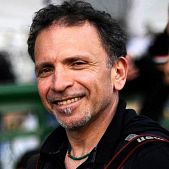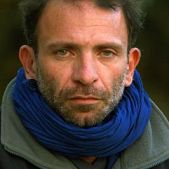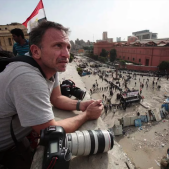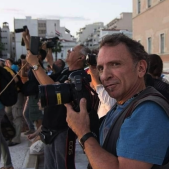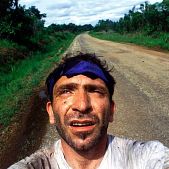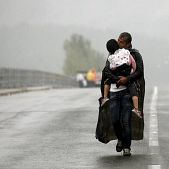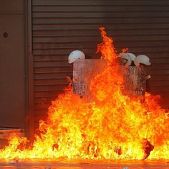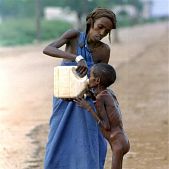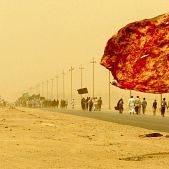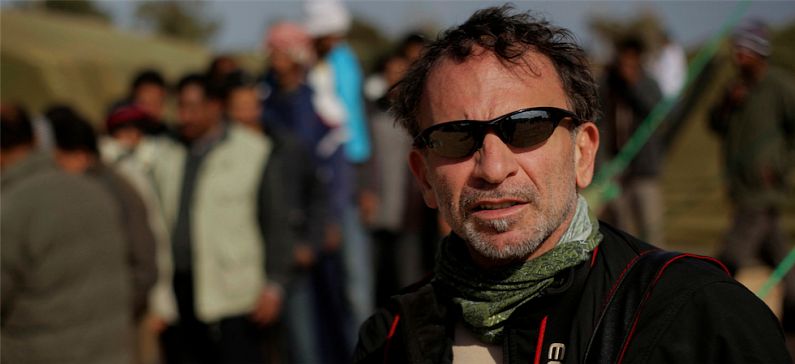
The Greek photojournalist-legend who made history
Yannis Behrakis was a Greek photojournalist and head of the photographic department of the Reuters news agency in Greece. With his lens, he captured the most important political, military, sporting and social events of the past 30 years, such as wars in various parts of the world, the immigration and refugee crisis, as well as major political and sporting events.
His sensitivity made him stand out like his rare ethos and humanity. He started his career because photography brought him closer to what people wanted to express.
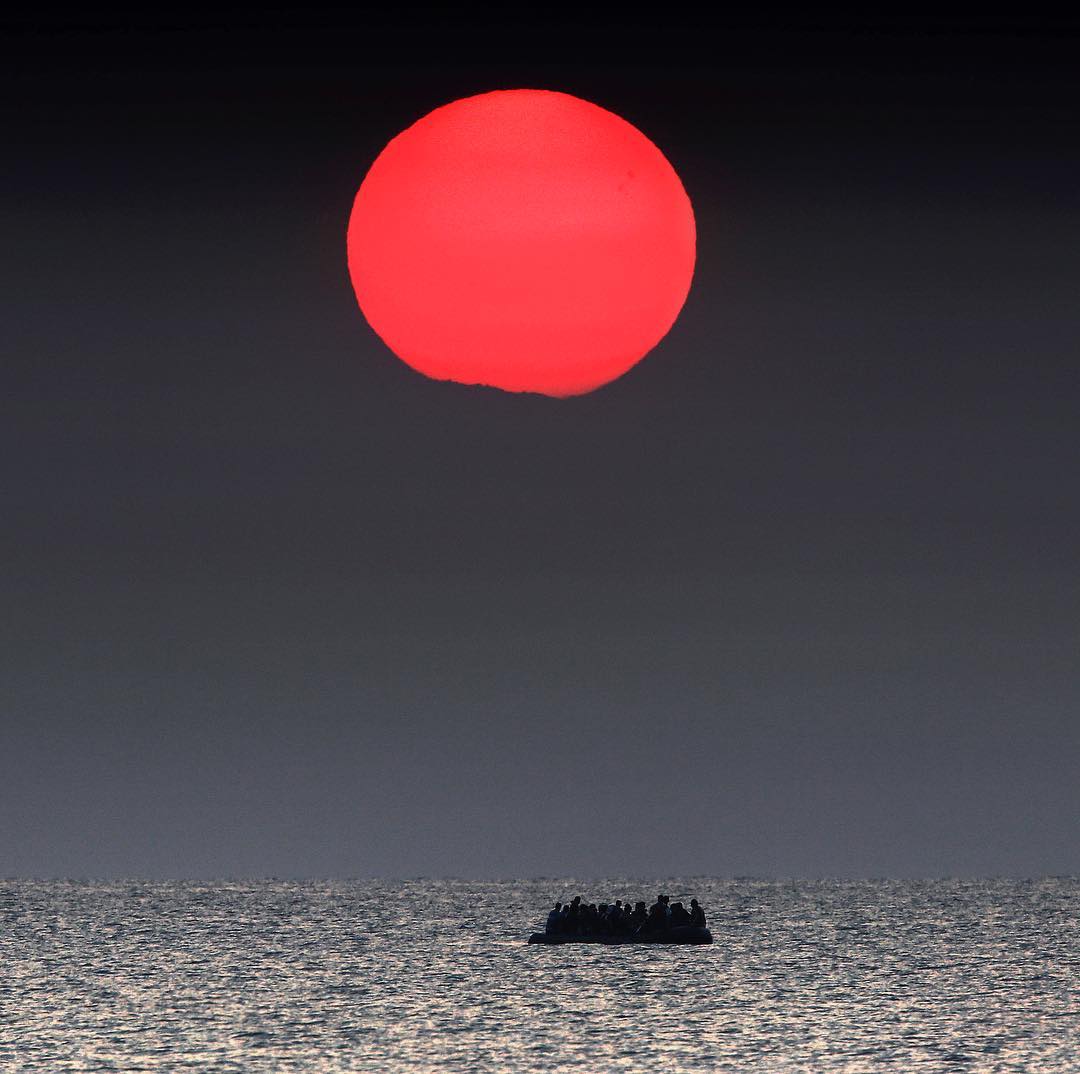
Source: REUTERS
He was one of the best photojournalists in recent years and was awarded many times for his work in Greece and abroad, while in 2015 he became Best Photographer of the Year for the Guardian and, in 2016, won the Pulitzer Prize for the way he covered the refugee crisis.
Yannis Behrakis was born in 1960 in Athens and studied photography at the Athens School of Arts and Technology and at the University of Middlesex in London. He then worked as a photographer in Athens in 1985-86, while a year later, he was offered a job at Reuters based in Athens. His first assignment abroad was in Libya in 1989. Since then, he had been documenting the most significant international events.
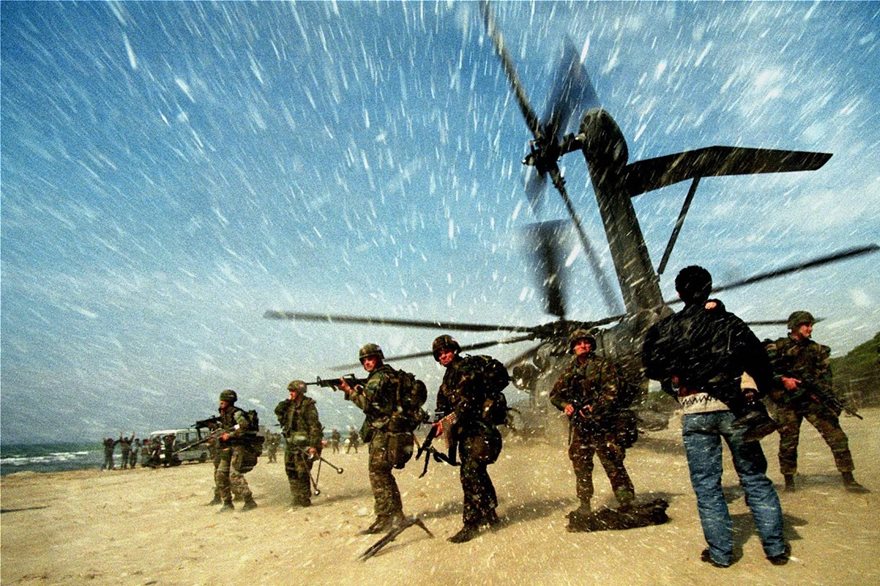
Source: REUTERS
He covered the funeral of Khomeini in Iran, the turmoil in Eastern Europe and the Balkans, the wars in Croatia, Kosovo, Chechnya, Sierra Leone, Somalia, Afghanistan, the Arab Spring in Egypt, Libya and Tunisia. Moreover, he had covered the conflict between Israelis and Palestinians.

Source: REUTERS
In the late 1990s, he decided to move to Kosovo for years, living close to the Yugoslav civil war. When, in 1998, he entered a flattened village, he was the one who carried the news to one of the few survivors about who was the winner of the battle.

Several horrendous events he had covered for Reuters followed, and two years later, in 2000, he decided, along with his friend who together covered the Yugoslav War, to go to the most lethal front of the planet, Sierra Leone. In an ambush set up by the guerrillas, he was saved by a miracle and saw his friend Kurt Sork fall dead from bullets next to him. He never got over his death, and since then he has been trying to protect his colleagues and friends – even at the risk of his life.
In this surprise attack, American reporter Schork and Spanish cameraman Moreno de Mora of the Associated Press died, as well as four of the ten West African soldiers accompanying the journalists’ group.
In 2008, he moved with his wife and his 11-month-old daughter for a year to Jerusalem as director of the Reuters photographic department for Israel and Palestine. In 2010, he returned to Greece to cover the financial crisis, resulting in covering many rallies, in the pulse of current affairs.
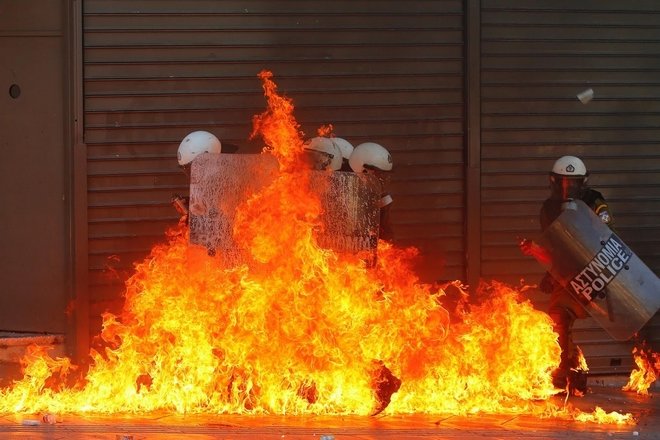
Source: REUTERS
He had been accustomed to changing fronts, living dangerously. He managed to survive from the Chechen separatist bombshells, while in Afghanistan he was in the old boat with which he roamed in the Adriatic Christmas Eve in 2018, photographing the refugees. Αlso dangerous was the mission to Kobani, where, there, on the border of Syria with Turkey, he lived in close proximity to the ISIS jihadists.
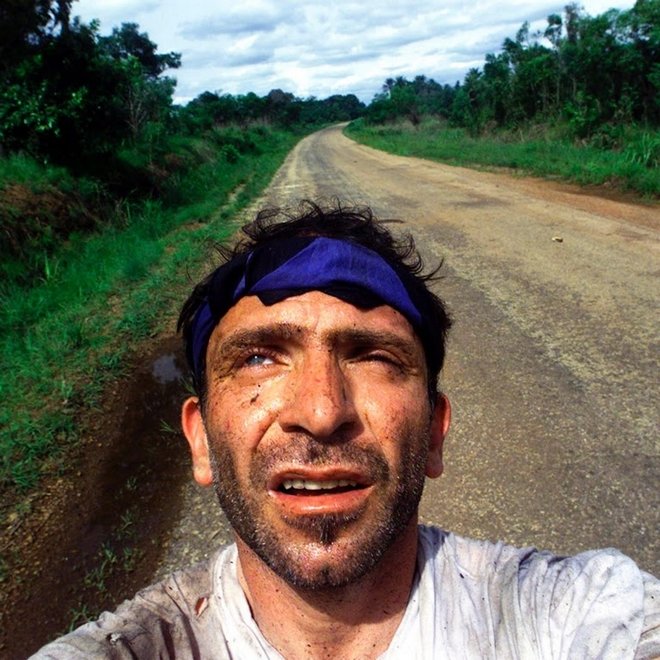
Every time the Turks sent him away, he returned. They even captured him twice and the third, when he was threatened to be deported, someone pointed out that as a Greek he knows how to escape. “Yes, I am a Greek, but a very good Greek”, he said, gaining trust, as he did whenever the situation got difficult.
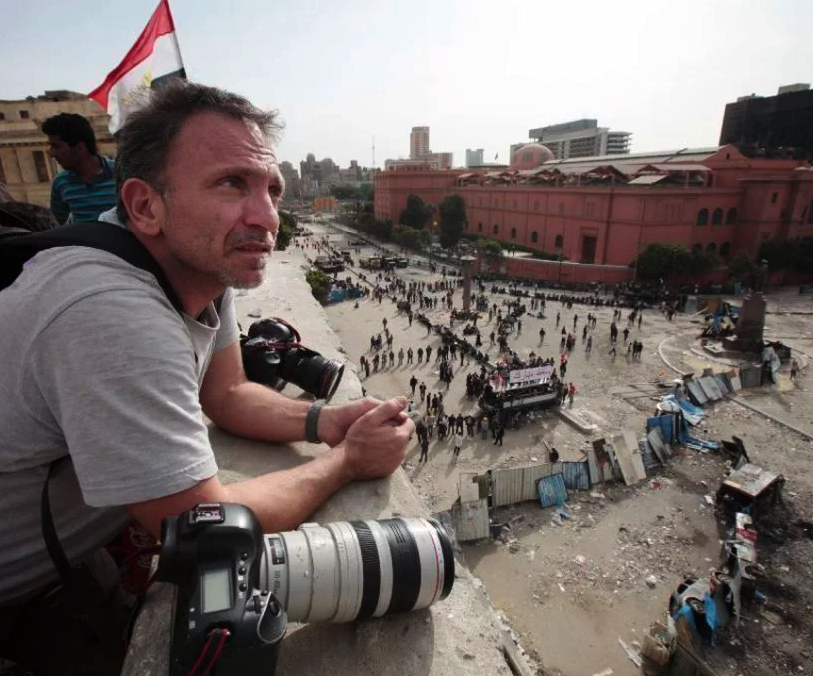
Yannis Behrakis worked for 30 years as a photographer at Reuters, and in 2016, he was honored with the Pulitzer Prize for the way he and his team covered the European refugee crisis. One of the most emblematic photographs of that time was taken in a rainy day and captured the love of a father for his child.
The emblematic photographer, in an interview he had given to Kathimerini, had revealed his thoughts on this unique “click,” “There have been many moments that have touched me, that made me feel part of the whole thing. Because there is also something I never forget. I, like so many other people, have refugee blood inside me. My grandmother was a refugee from Smyrna and told me what her family had lived. So I understand very well what refugees are going through today.
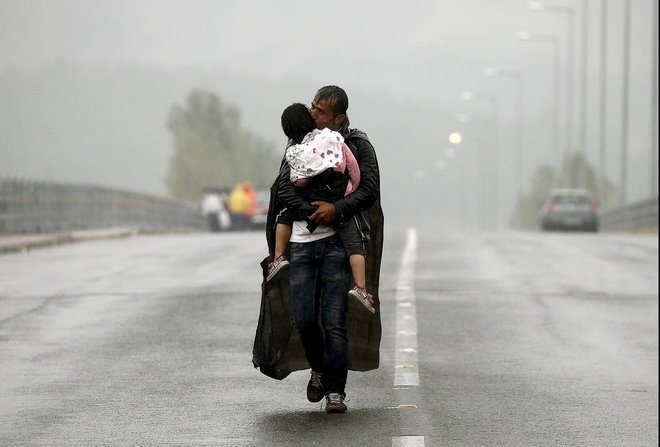
Source: REUTERS
It was one of those moments, was in Edomeni in the winter of 2015 when I saw this father, carrying his daughter in the rain for many miles. He wore an improvised cape of rubbish bags to protect himself from the rain. And at some point, while going to what he believed was freedom and redemption, he tightened his daughter firmly in his arms and kissed her. When I saw him walking in the middle of the road with such power and love, he seemed huge, like a superhero. And because I too have a daughter at the age of his, this scene as shocked me.
I sometimes say that by this photo I have shown that superheroes are not only in our imagination. There is also life. It may be a simple, uneducated person, a poor one, a beggar, someone you do not pay attention to. But there comes a moment when this man will make an act so strong that he will let you bewildered with his beauty. “

Source: REUTERS
Behrakis had earned prestigious awards, like the Greek Fuji Award News Photographer of the Year for seven times. In 1999, 2002 and 2003 he was named News Photographer of the Year by the Fuji Awards Institution in London, Barcelona and Rome respectively. In 2000, Behrakis also won the First Prize in the General News Stories category by the World Press Photo Foundation in Amsterdam, among 4.000 photographers from 122 countries and 40.000 photos, the most prominent world distinction in the photography industry.
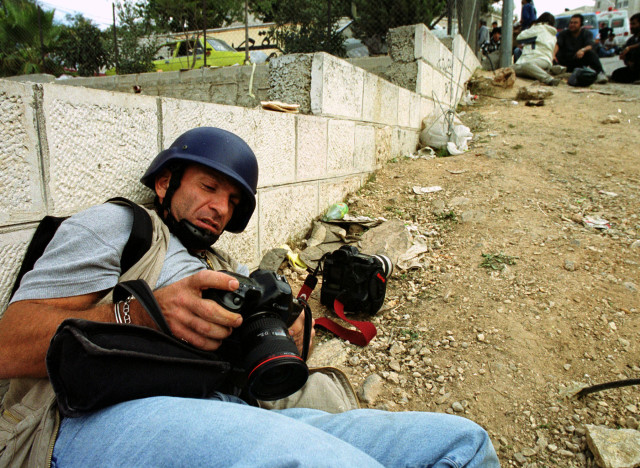
The same year in New York, Yannis Behrakis was awarded the Overseas Press Club of America photography award in the category Best Foreign Report in the United States. In 2000, the President of the Republic awarded Behrakis the Botsis Foundation Award and on October 14, 2002 he won the Bayeux Award for War Correspondents in the annual world contest for photojournalists covering war conflicts all over the world. In 2015 Guardian chose Yannis as the photographer of the year.
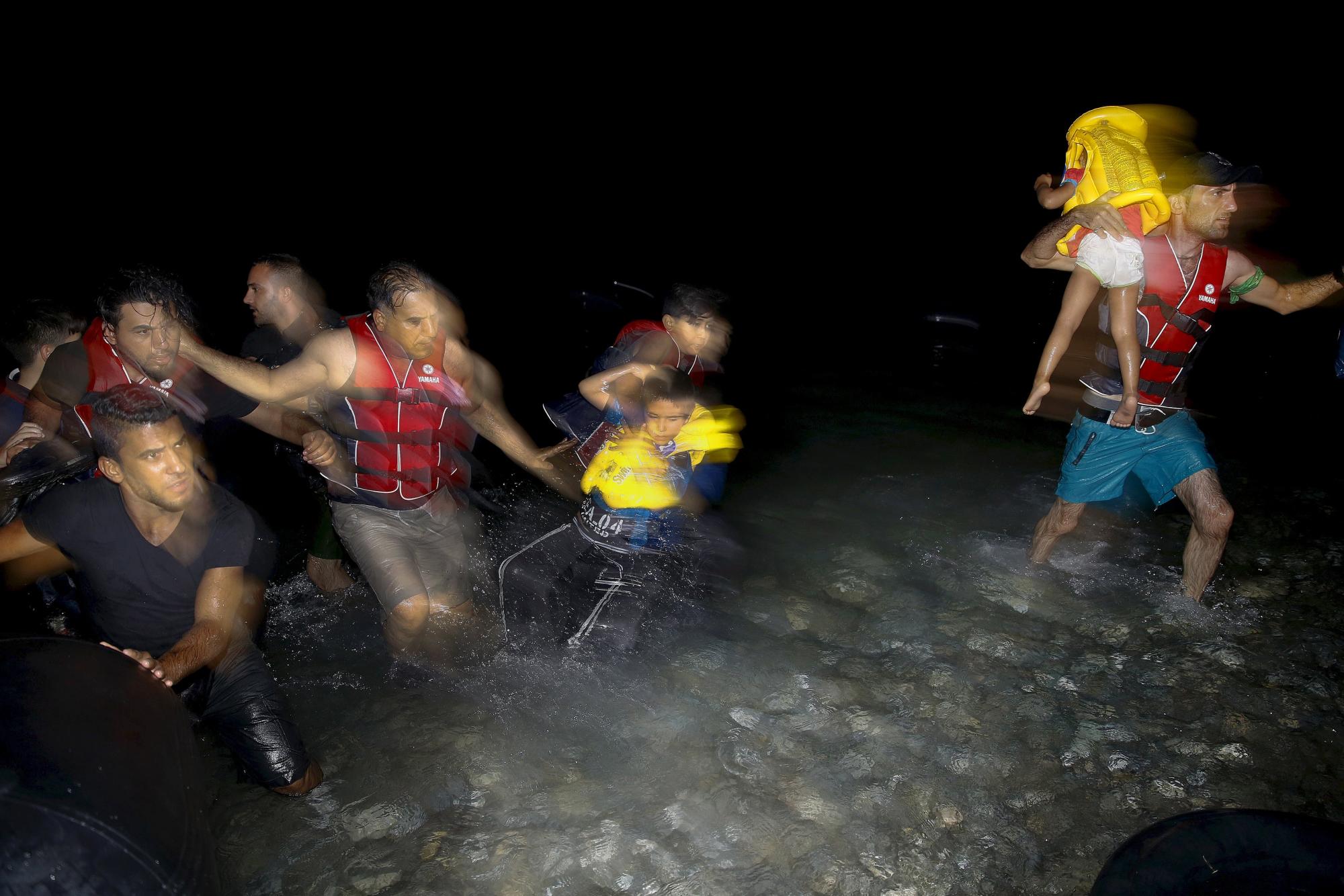
Source: REUTERS
On March 2, 2019, the award-winning Greek photojournalist passed away at the age of 59, after a tough and unequal battle with cancer. Among the countless reports about his loss, Reuters describes him as one of the agency’s most distinguished and loved photographers, “In his 30-year career, Behrakis has covered many of the most turbulent events around the world, including the clashes in Afghanistan and Chechnya, a very powerful earthquake in Kashmir, and the rebellion in Egypt in 2011. In the process, he earned respect from both his collaborators and rivals for his abilities and bravery.”
Read Reuter’s major article about Yannis Behrakis here.
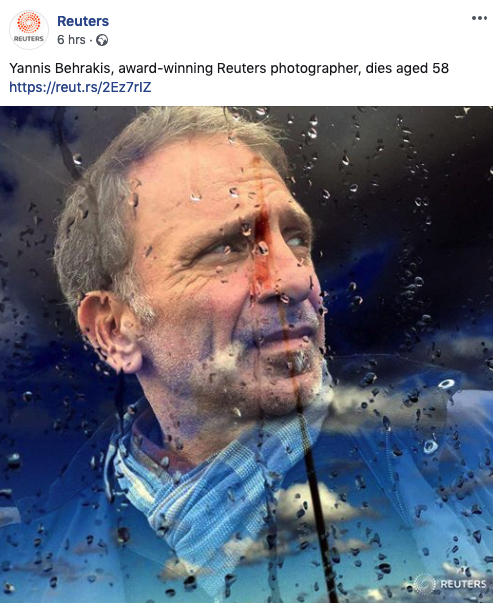
His colleagues who collaborated with him stated that Reuters lost a talented and committed journalist, who made the clearest narration of the story in the most artistic way. “You will not see anyone so dedicated and so focused as to sacrifice everything to capture the most important photo,” said veteran photographer of the agency, Goran Tomasevic.
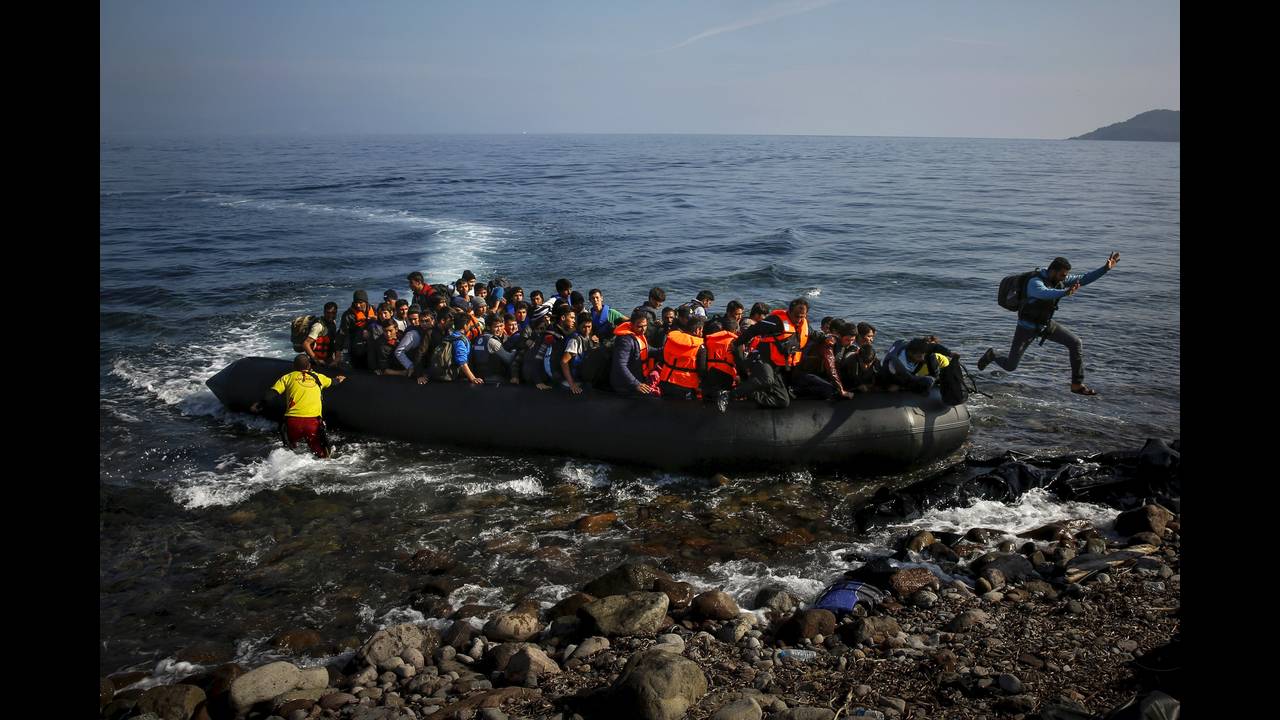
Source: REUTERS
His friend and collaborator for 30 years, Vassilis Triantafyllou, described him as a “hurricane,” who worked at all times of the day and night, sometimes at risk, to get the image he wanted. The photographer, Alkis Konstantinidis, “apprentice” of the great photographer and member of the Pulitzer-Prize winning team, described Behrakis as a demanding mentor who was trying to set a good example. “When he opened up, he was a man you wanted to sit next to and talk to him for hours. You would always get something from him,” Alkis Konstantinidis said.

Source: REUTERS
Read The Guardian’s major article about Yannis Behrakis here.
“Yannis was the best photojournalist of his generation. The only reason why I became a photojournalist. It was a great deal of interest to people who had the privilege of photographing in the most extreme situations. I was lucky to have him as my teacher and mentor,” said Lefteris Pitarakis, while the sadness for the loss of Behrakis was also expressed by Aristotle Sarrikostas, one of the most important Greek photojournalists.
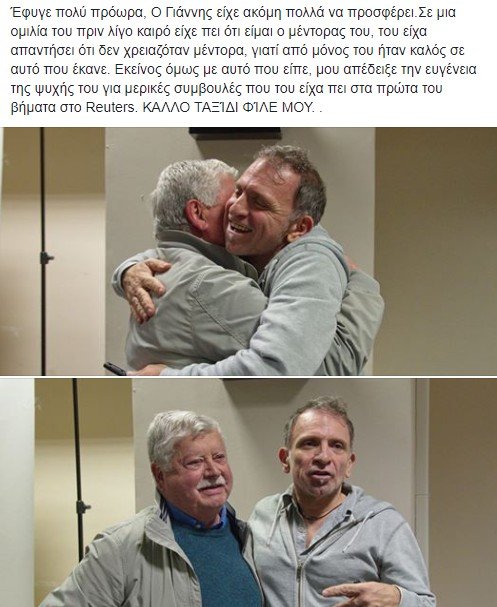
Read Associated Press’ major article about Yannis Behrakis here.
What was behind Behrakis’ work-life career was his rare determination to reveal to the world what was happening to war countries and countries in crisis. He believed in the power of the image, the photograph that could attract the attention of the world, even to change its behavior. This belief had prompted him to create a work-stock which will remain in the collective memory for many years after his passing away.

Source: REUTERS
“I always want to be where I’m needed – to see with their soul and eyes. My mission is to tell you the story, so you can decide what you want to do. My mission is to make sure no one can say “I didn’t know”, he had said.
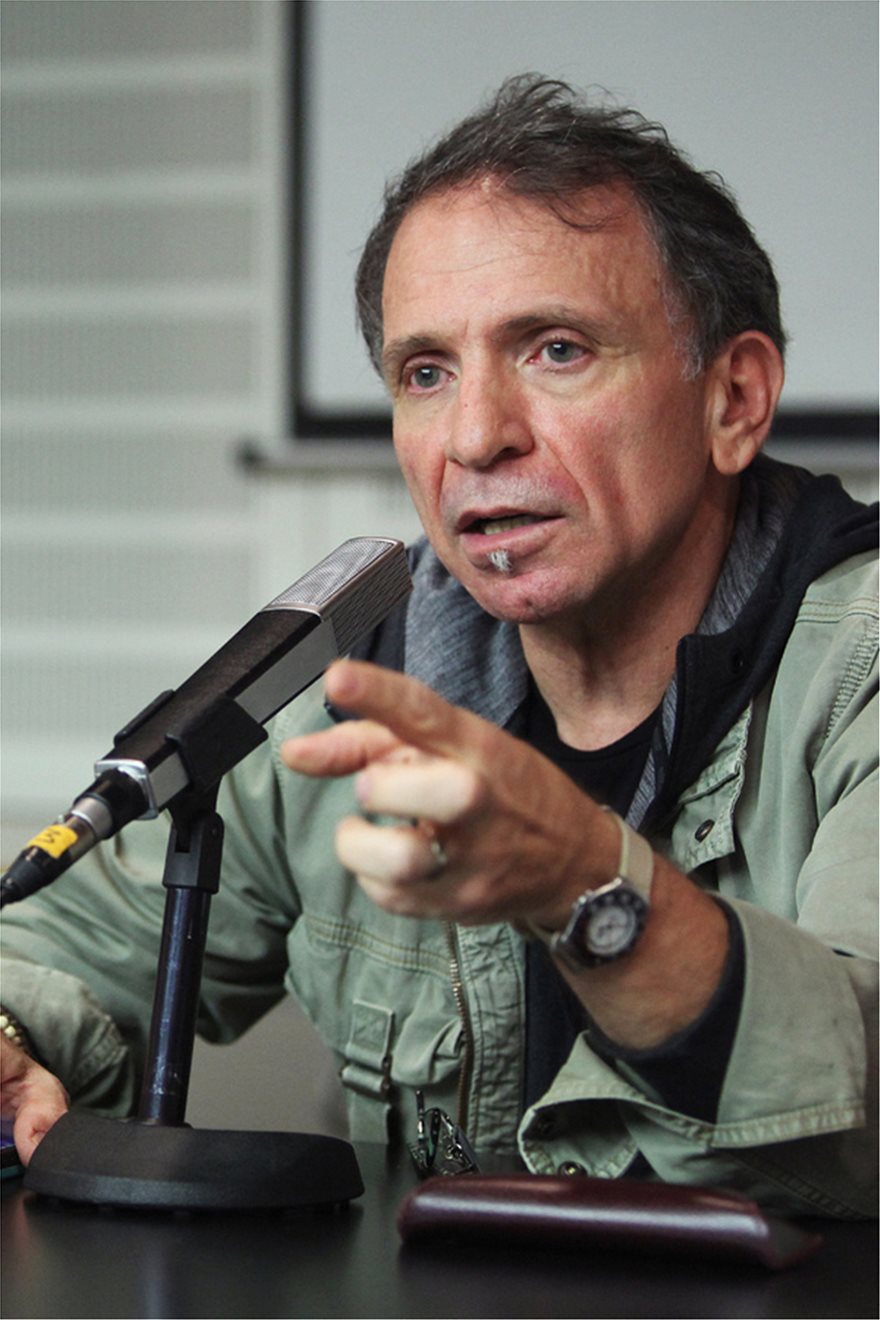
Humor and self-sarcasm were his weapons, and he loved everything that crossed the limits, rock music, diving, dangerous sports, the mountains and sea, motorcycles. He respected the diversity and the views of others.
He also loved America very much “for its air of freedom” and was recently commissioned to teach photojournalism at major US universities. “War is like a fire in dry grass,” he said whenever he was asked for his opinion on bloody conflicts. “Just blow the wind and the fire goes from one place to another”.
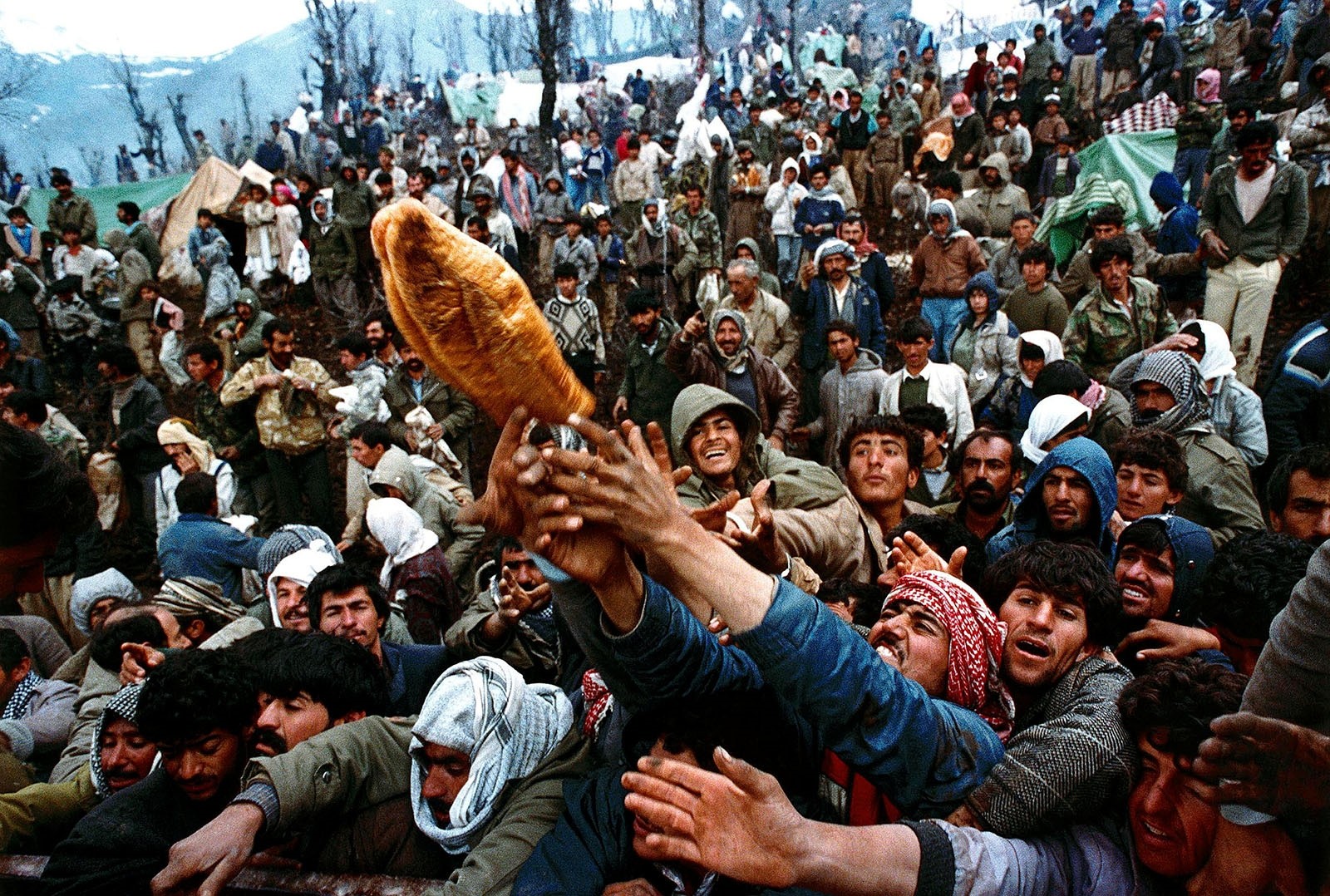
Source: REUTERS
Wars and death were around him, but cancer took him, which he faced with pride and strength until the end, having at his side his beloved wife Elizabeth Behraki and his daughter Rebecca. He also had a son from a previous marriage, Dimitris. His last wish was to be cremated and the music of the teenage-idol George Harrison, to whom he had dedicated the award-winning exhibition at his school, to be played.







